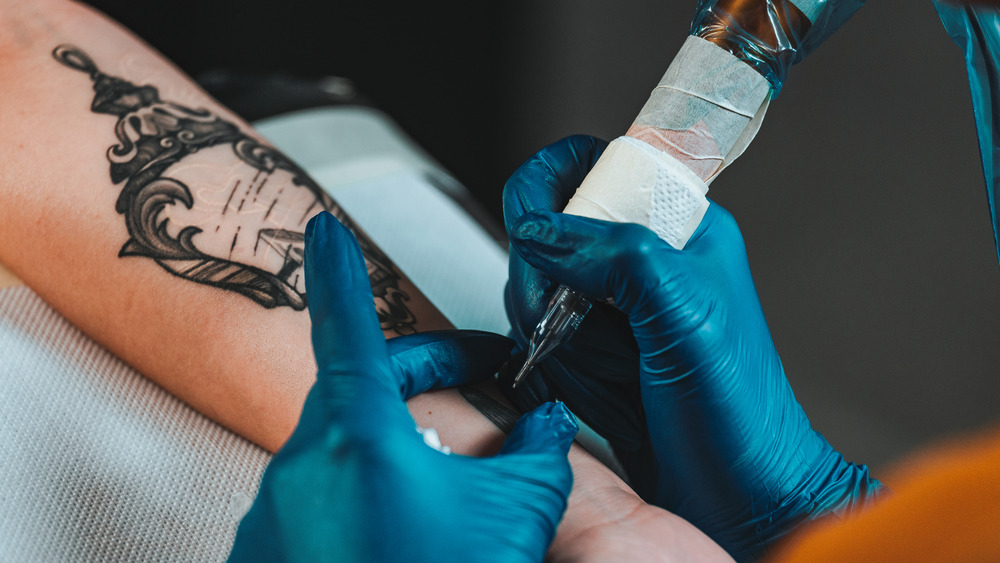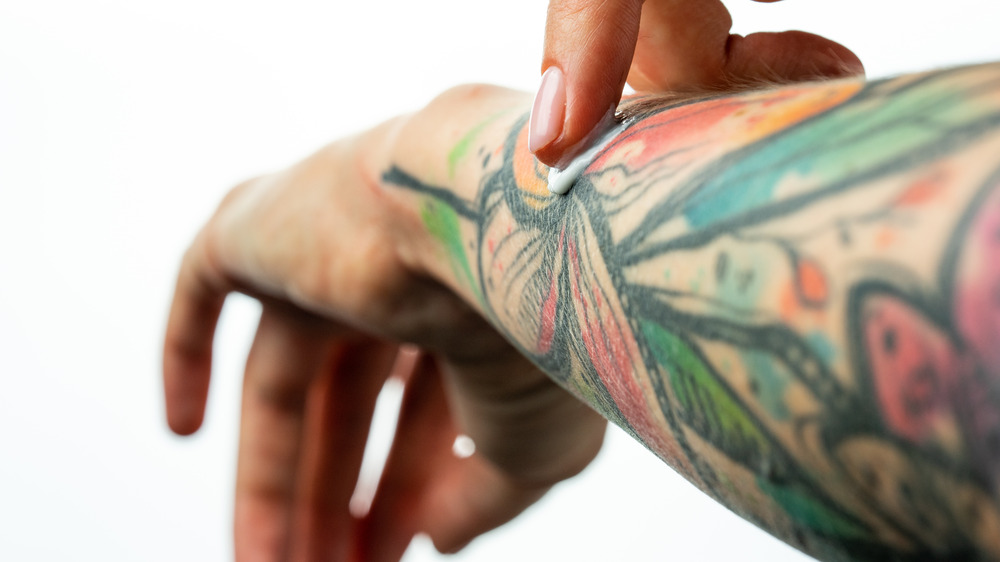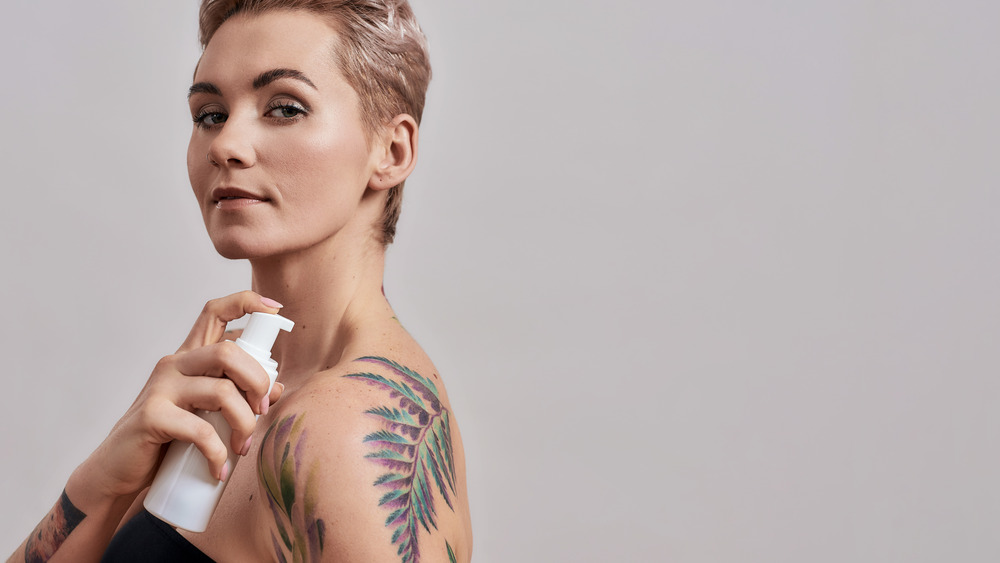The Right Way To Care For Your New Tattoo
You just got some new ink! Yay for you! If it's your first tattoo, you may be wondering how to care for it over the next couple of weeks, so your tattoo remains clear and vibrant on healthy skin. But even if you've been through the process before, it's good to review the best way to care for your new tattoo.
Surprisingly, it's not a law in all states that aftercare instructions be provided by the tattoo parlor. Of the 50, seven states have no regulations at all on tattoos — including licensing — while just seven states require that the artist tell you about proper aftercare. The rest of the states fall somewhere in between when it comes to providing customers with instructions, according to WebMD.
So, depending on where you live, the responsibility of finding out this important information may fall on you. Don't wait until the needle hits your skin before you think about aftercare. Educate yourself about the recommendations beforehand and have the necessary aftercare products ready to go. Here's how to get started.
Caring for your tattoo right after getting inked
Your work of art is done, but remember that your skin has just been pierced multiple times by a needle, so you need to keep the area clean to be sure an infection doesn't set in. Your artist will apply a thin layer of petroleum jelly or antibiotic ointment and cover your tattoo, with a bandage, plastic wrap, or with a relatively new and tattoo-specific wrap called, depending on the brand, Sandiderm, Tegiderm, or Second Skin (per Inked). You'll be told (ask if you're not) how long to leave the covering on, which could be anywhere from a few hours (per Healthline) to overnight — longer if Sandiderm or a similar product was used. A covering is put on to prevent germs from entering the skin, so don't be in a rush to remove it to gaze at your tat, however gorgeous it may be.
When it's time to remove the covering, wash your hands first. As you peel back the covering, you may see fluid beneath it. Don't worry — this is just extra ink and plasma, the clear component of blood, and it's normal. Gently wash the tattoo with warm water and mild, fragrance-free soap. Pat dry — don't rub — with a soft cloth or towel. Avoid using a tissue or paper towel, as the tiny fibers can remain in the ink. Apply a thin layer of unscented alcohol-free moisturizer or ointment and leave your tattoo uncovered.
Some tattoos are created in stages, so be sure to follow these care instructions after each session.
Tattoo care for the first couple of weeks
For the first 48 hours, continue to wash your tattoo once or twice a day (per Healthline) and apply light coats of moisturizer or ointment every couple of hours, recommends Inked. The American Academy of Dermatology says that 100 percent petroleum-based products (aka Vaseline) may cause ink to fade, so it's best to avoid them during this period, although applying a light layer of Vaseline before a (cool) shower can be helpful in protecting the tattoo from water. Some other don'ts for the next two weeks: wearing tight clothing over the tattoo or fabrics that might stick to it; immersing yourself in a pool, natural body of water, or hot tub; exposing it to sunlight; and using sunblock (a no-no until the tattoo is healed).
Sometime in the two weeks after you've been inked, you may notice that your tattoo develops scabs. They may not be very thick, but they will harden and begin to fall off. Your tattoo will probably feel pretty itchy. Whatever you do, resist the urge to scratch or pick at the scabs. This can damage the tattoo and cause scarring. Continue to wash your tattoo once or twice a day and apply an unscented and alcohol-free moisturizer several times a day to relieve the itchiness.
Remember that throughout the healing process, your skin is vulnerable to infection. Touching it, especially if your hands are not cleaned, should be avoided.
Long-term tattoo care
Although your tattoo may look and feel like it's healed within two to three weeks, it's just the outer layer of skin that has healed so far. It can take up to six months for all layers of skin beneath the tattoo to fully heal. The itchiness should ease by one month in, but if it doesn't or the area becomes red, warm, or painful at any time after the first few days, or you develop a fever or chills, you may have an infection and should see a doctor, recommends Healthline. Itchiness may also indicate an allergy to the tattoo ink. An allergic reaction can occur right after you get the tattoo or as much as several years later. A study conducted in 2019 and published in the journal Contact Dermatitis, found that the dye most likely to cause an allergic reaction is red.
It's wise to continue with aftercare until your tattoo is completely healed by keeping it clean, hydrated, and protected by sunscreen. Not only will such care provide a healthy outcome, but it will keep your tattoo looking just the way you like it.




